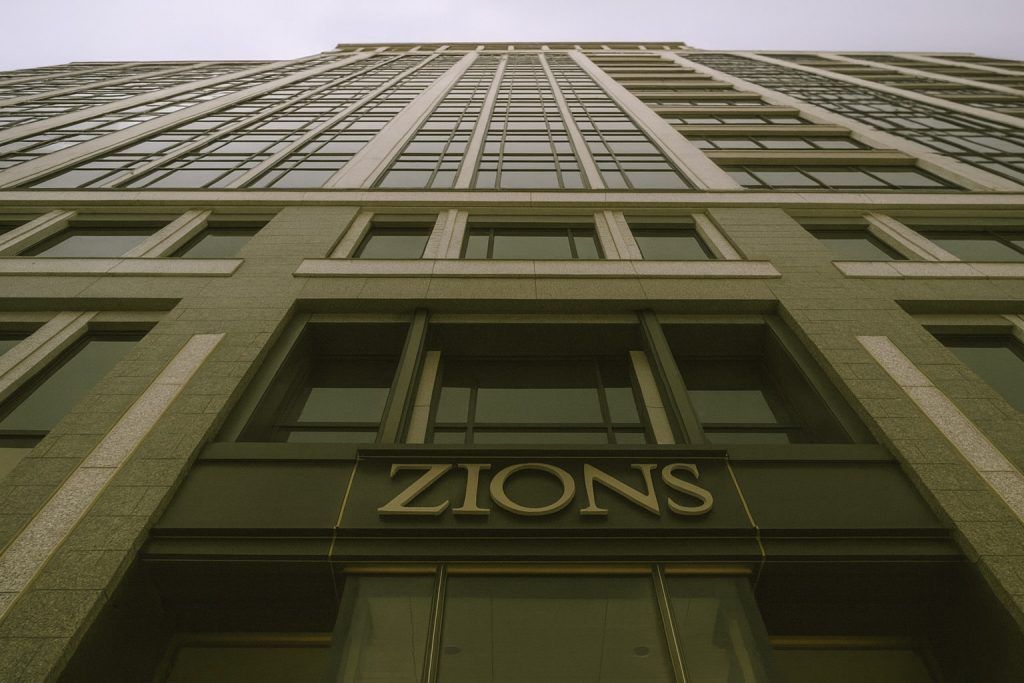- Near Record High: Alphabet’s stock traded around $255–$256 on Oct. 16 and hovered near $252 as of Oct. 17, marking a fresh 52-week high [1]. Shares jumped ~2% yesterday and are up over 30% in 2025, vastly outpacing the market (S&P 500 +12% YTD) [2]. At these levels, Alphabet’s market capitalization is just shy of $3 trillion [3].
- Analysts Bullish: Wall Street is largely upbeat. Scotiabank hiked its price target to $310, citing a “clear recovery” in Google’s core ad business [4]. BMO Capital raised its target to $294 on Google’s “AI leadership” in search and cloud [5]. Overall, ~79% of analysts rate GOOGL a Buy, and the average 12-month target sits in the mid-$250s [6].
- AI & Cloud Momentum: Google is pouring billions into AI. In the past week it unveiled $24 billion in new AI infrastructure projects – including a $15 billion AI data center hub in India (Google’s largest-ever investment there) [7] [8] – plus $9 billion to expand U.S. data centers. New AI-infused products (like the Pixel 10 smartphone with a next-gen Tensor chip) and advanced AI models are rolling out [9]. These bets are paying off: Q2 cloud revenue jumped 32% YoY (outpacing Amazon’s AWS) [10], highlighting Google’s determination to stay ahead in the AI race.
- Advertising Rebound: After a mid-decade slump, Google’s ad business is roaring back. In Q2, Search ad revenue climbed ~11.7% YoY to $54.2 billion, and YouTube ads surged 13% to $9.8 billion [11] – beating forecasts and fueling a 13% rise in Alphabet’s total quarterly revenue [12]. New AI-powered features (like generative “Search Overviews”) have kept users engaged, boosting ad clicks [13]. Analysts expect these gains to continue, projecting ~16% revenue growth and 27% EPS growth for Alphabet in 2025 [14].
- Risks to Watch: Regulators are circling – the EU and UK have intensified antitrust scrutiny of Google’s dominance [15], and a U.S. DOJ case targeting Google’s ad tech business is ongoing [16]. Some strategists warn that tech stocks’ valuations look “frothy” at current levels [17]. With Q3 earnings due Oct. 29, Alphabet will need strong results to justify its recent rally [18].
GOOGL Stock Nears Record High on Rally Momentum
The Google logo at the company’s headquarters. Alphabet’s stock has been flirting with record highs amid surging optimism in its core ads and AI businesses.
Alphabet Inc.’s Class A shares (NASDAQ: GOOGL) have been on a tear this year, recently touching their highest levels in over a year. The stock closed at $251.03 on Oct. 16 – around a new 52-week peak of ~$256 [19] – after jumping about 2% that day. As of Oct. 17, GOOGL traded just above $251, holding near that high-water mark. At these prices, Alphabet’s market value is roughly $2.97 trillion, putting Google’s parent on the cusp of the elite $3 trillion club [20]. For context, Alphabet’s stock has soared over 30% year-to-date, vastly outperforming the broader market (the S&P 500 is up ~12% in 2025) [21]. The rally accelerated in recent months – Alphabet leapt 38% in the third quarter alone, its best quarterly performance since 2005 [22] – and the share price is now about 57% higher than a year ago [23], reflecting robust investor confidence.
Several factors have fueled Alphabet’s climb. In late September, a favorable court decision removed a major cloud over Google’s future: a U.S. judge ruled that Google will not be forced to break up its Chrome browser or Android business in an antitrust case [24]. That relief sparked a one-day 9% surge in Alphabet’s stock [25] and reassured investors that a dramatic breakup is off the table for now. Even a brief tech sell-off in early October (amid geopolitical and economic jitters) proved short-lived – Alphabet quickly rebounded to near-record levels by mid-month [26]. As one analyst observed, “Alphabet’s stock flirts with record highs” as both technical trends and fundamentals improve [27]. In short, market sentiment on Google has swung decisively positive heading into the final stretch of 2025.
Big Bets on AI and Cloud Pay Off
Alphabet’s recent moves show it is “all in” on artificial intelligence. In just the past week, Google announced plans to spend over $24 billion on new AI and cloud infrastructure globally [28]. This includes a massive $15 billion AI data center hub in India, which is Google’s largest-ever investment in that country [29], plus another $9 billion to expand its AI supercomputing facilities in the U.S. [30]. “We’re seeing a once-in-a-generation investment cycle around AI,” noted one analyst, “and Google is all in” [31]. These hefty expenditures underscore Google’s determination to maintain its lead in the AI race and meet exploding demand for AI cloud services. Indeed, Google’s cloud division is already reaping rewards: Google Cloud revenue jumped 32% year-over-year in Q2 – the fastest growth among the big-three cloud providers – even outpacing Amazon’s AWS (17.5%) and nearly matching Azure’s 39% surge [32]. This torrid growth, coupled with improving cloud profitability, suggests Google’s AI investments are boosting its top line and carving out a competitive edge.
At the same time, Google is rapidly infusing AI into new products. On Oct. 4, the company’s “Made by Google” event unveiled the flagship Pixel 10 and Pixel 10 Pro smartphones, featuring a next-gen Tensor G5 chip that enables “AI everywhere” on-device [33]. These phones boast generative AI capabilities and advanced camera features powered by Google’s custom AI silicon. Google also rolled out other hardware – like a new Pixel Fold and Pixel Watch 4 – each loaded with AI-driven enhancements [34]. While consumer devices are a small slice of Alphabet’s business, the launches signal how Google is weaving AI into everything from phones to cloud tools. In early October, Alphabet even quietly launched “Gemini Enterprise,” a platform to help businesses build their own AI chatbots and assistants [35]. And Google Cloud scored a high-profile win by being named the official cloud provider for the 2028 Olympics in Los Angeles [36], leveraging Google’s AI infrastructure to power the massive event. All told, these moves highlight how Google is doubling down on AI across both consumer and enterprise domains.
The market has taken notice that Alphabet’s AI bets are beginning to pay off. Google’s hefty spending on AI data centers and chips is reinforcing its “moat” against rivals and opening new revenue streams in cloud services. Its latest 3nm Tensor Processing Unit (TPU) chips, for example, show significant performance gains, narrowing the gap with Nvidia’s leading AI chips [37]. “GOOGL’s AI leadership continues to translate into strength in core Search and GCP… driving incremental user value,” analysts at BMO Capital Markets wrote in a recent note [38]. In other words, Wall Street increasingly views Google’s AI strategy not as hype but as a real competitive advantage – one that is reinforcing its dominance in search and cloud. Evercore ISI’s tech analyst Mark Mahaney even remarked that Google has “one of the best [AI models] out there in Gemini,” referring to Google’s next-generation large language model expected to debut soon [39]. All of this has placed Alphabet firmly in what investors call the “AI winner’s circle” of mega-cap tech giants [40].
Advertising Rebound Fuels Growth
Even as AI grabs headlines, Google’s advertising machine – the company’s profit engine – is roaring back to life. After a brief slowdown last year, Google’s core ad businesses are again growing at healthy double-digit rates. In Q2 2025, Google’s search advertising revenue jumped about 11.7% year-over-year to $54.2 billion [41]. Perhaps even more impressive, YouTube ad sales surged 13% to $9.8 billion [42], handily beating analysts’ expectations and marking a strong turnaround for the video platform. Thanks to these gains, Alphabet’s total quarterly revenue reached $96.4 billion (up 13% YoY) [43] – clear evidence that advertisers are spending freely on Google’s platforms once again.
What’s driving this advertising uptick? A big factor is Google’s integration of AI features into Search and YouTube that boost user engagement. The company’s new generative AI summaries in search results (known as “Search Overviews”) and related AI enhancements have kept search traffic strong, prompting users to ask more complex follow-up queries – which in turn means more opportunities for ad impressions [44]. Google notes that AI-driven search results are leading people to make longer, more detailed searches, aiding ad monetization. On YouTube, the rise of YouTube Shorts (short-form videos) and improved ad targeting are also paying off, with advertisers seeing solid returns from those formats. “Google’s ad businesses are reviving,” TS2.tech observed, as AI integration helps refresh the appeal of Search and YouTube for both users and marketers [45]. In short, new AI features are not only engaging users but also giving advertisers novel ways to reach audiences, rejuvenating Google’s ad revenue growth.
Importantly, analysts expect Google’s ad momentum to continue through the rest of 2025 and into next year. Wall Street consensus forecasts call for roughly 16% revenue growth and 27% earnings growth for Alphabet in 2025, driven largely by the ongoing rebound in advertising (alongside steady growth in cloud services) [46]. The upcoming Q3 earnings report on Oct. 29 will be a crucial checkpoint for this narrative. Many experts anticipate another strong quarter for both Search and Cloud [47], given the favorable trends. Barring any macroeconomic setbacks, Google’s dominant position – it still commands about 90% of global search engine market share [48] – and its improving ad tech (like new AI tools for advertisers) give it a solid runway for growth. That said, Google isn’t without competition in ads (rivals like TikTok in short video ads and Amazon in retail search ads are vying for marketers’ budgets). But so far, Google has managed not only to defend its advertising empire but to grow it, even in the face of these challengers.
Wall Street Stays Bullish – Price Targets Keep Climbing
Given Alphabet’s strong performance, it’s no surprise that investor sentiment has turned overwhelmingly bullish. In recent weeks, dozens of analysts have reiterated buy ratings on GOOGL and raised their price targets for the stock. “Alphabet’s stock [is] flirting with record highs,” one analyst noted, as both technical and fundamental trends improve [49]. For example, Scotiabank recently bumped its target price from $240 to $310, citing a “clear recovery” in Google’s advertising business and a return to double-digit ad growth [50]. BMO Capital Markets likewise lifted its target to $294 (maintaining an Outperform rating) and praised Google’s “AI leadership” in search and cloud, which is translating into tangible business gains [51]. Even brokerage firms that were previously cautious are turning more positive: UBS, for instance, nudged its target up to $255 on evidence of improving ad trends [52].
Overall, the street view on Alphabet is extremely positive. According to TipRanks data, 30 out of 38 analysts now rate the stock a “Strong Buy,” versus just 8 Hold ratings, with an average 12-month price target of about $258–$260 per share [53]. (For context, the stock is trading in the low-$250s currently.) Some analysts have been outright glowing in their commentary. “When we look at the fundamentals – the ad recovery, the cloud growth, the AI investments – it’s a very compelling story,” said one market strategist, emphasizing that Google’s scale and innovation give it multiple avenues to keep expanding [54]. Many experts thus see further upside for the stock if current trends persist. One recent report even dubbed Alphabet’s 2025 surge an “AI and ad revival” that solidifies Google’s status among the top AI-era winners [55]. In short, Wall Street’s base case is that Google’s dominance in core areas, bolstered by AI, will continue to drive growth – and thus justify a higher share price in the months ahead.
There are, however, a few cautions creeping in even among the bulls. After such a steep run-up, valuation has become a talking point. Alphabet’s forward price-to-sales ratio is around 8.1×, which is above the tech sector average (~6.9×) and well above the broader industry average (~6.4×) [56]. While still below Microsoft’s rich multiples, this “stretched valuation” has led some to urge restraint. Zacks Investment Research, for example, recently flagged Google’s high valuation and gave the stock a Rank #3 (Hold), suggesting new investors may want to wait for a better entry point [57]. Virtually no major analysts are outright bearish on Alphabet at the moment, but a minority do question how much higher its valuation can go without a pause. The range of price targets on the street spans from around $170 on the low end to $310 at the high end [58], reflecting that while most see substantial upside, a few are cautious about the stock’s lofty pricing relative to fundamentals.
Regulatory & Market Headwinds: Antitrust Scrutiny and “Frothy” Valuations
Alphabet’s management and investors alike remain cognizant of the potential headwinds facing the company. Regulatory pressures are chief among them. In Europe and the U.K., authorities have intensified scrutiny of Google’s market dominance. The U.K.’s Competition and Markets Authority (CMA) recently designated Google Search as having “strategic market status,” which subjects it to special oversight and rules aimed at curbing anti-competitive behavior [59]. Across the Channel, the EU is enforcing its new Digital Markets Act, and European regulators are reportedly weighing potential actions – including multibillion-dollar fines – if Google is found favoring its own services in search results [60]. In one example, Reuters reported Google has even proposed changes to how it displays search results (“selection boxes” for certain services) to appease EU regulators and avoid hefty penalties [61].
In the U.S., meanwhile, Alphabet is contending with multiple antitrust cases. The Department of Justice’s high-profile lawsuit over Google’s search distribution deals (which allegedly stifled competition) wrapped up its trial phase this fall – and notably, Google averted the most feared outcome when the judge did not mandate a breakup of the Chrome or Android units [62]. That legal victory in September removed a serious overhang on the stock. However, another DOJ case targeting Google’s advertising technology business is ongoing, and debates continue over possible remedies if Google is found liable [63]. Any drastic intervention – like forcing Google to spin off parts of its ad-tech arm – is considered unlikely in the near term, but the mere uncertainty keeps an overhang on the company. As one report noted, regulators “haven’t backed off entirely” from scrutinizing Google [64], even if an imminent breakup is off the table. In short, Alphabet remains in the regulatory crosshairs globally, and future rulings or fines could impact its business or investor sentiment. So far, none of these issues has derailed Google’s growth, but they remain background risks worth watching.
Another consideration is the broader market environment. Tech stocks – especially the so-called “Magnificent 7” mega-cap tech giants – have been on an incredible run in 2023–2025, lifting indexes to record highs. Some strategists warn that parts of the tech sector now sport “frothy” valuations that could be vulnerable [65]. The Magnificent 7 (which includes Alphabet) trade around 23× forward earnings on average, well above historical norms (the S&P 500’s 10-year average is ~18.7×) [66]. If interest rates remain elevated or economic growth slows, investors might become less willing to pay such high multiples for growth stocks. In Alphabet’s case, the company’s heavy spending on AI is another potential worry. “Investors are starting to get a little more concerned about the money that’s being spent [on AI], and the payback for that investment,” Anthony Saglimbene, chief market strategist at Ameriprise Financial, cautioned in an interview [67]. Google is fortunate to have deep cash reserves to fund its AI ambitions, but the ROI on these multibillion-dollar bets will need to materialize in the coming years to silence skeptics. Any signs of an online advertising slowdown or a deceleration in cloud demand would also spook the market, given the high expectations now baked into Alphabet’s stock price. For now, such red flags haven’t appeared – but both the regulatory overhang and valuation question marks inject a note of caution into an otherwise bullish story.
Outlook: Earnings Test Ahead and Forecasts for GOOGL
Looking forward, Alphabet will have to prove it can meet the high expectations that investors have set. The next big catalyst is the company’s Q3 2025 earnings report on Oct. 29, when Google will reveal how its business fared during the summer quarter. Analysts are generally optimistic – they’re looking for another quarter of double-digit growth – but the results will be closely scrutinized. The consensus calls for around 8% year-over-year growth in Q3 earnings per share [68], with an acceleration to ~18% EPS growth by Q4 as comparisons ease [69]. For the full-year 2025, Wall Street forecasts Alphabet to earn roughly $9.95 per share, which would mark a 24% jump over 2024’s profit – a testament to the rebound in Google’s ad profits and the improving economics of its cloud unit [70]. If Alphabet meets or beats these estimates (as it has often done in recent quarters), it would validate the bulls’ case and could propel the stock to new highs above $260 [71]. On the horizon, other tailwinds like the holiday season (which typically boosts ad spending) and the continued rollout of new AI products – for example, Google’s much-anticipated Gemini AI model due later this year – could further support growth into 2026 [72].
That said, execution will be key. After such a steep climb in its stock, Alphabet may need to deliver near-flawless results to keep the rally going. Any disappointment – even a slight miss on earnings, or cautious forward guidance – could trigger some profit-taking given how much good news is already priced in. Most experts remain positive on Alphabet’s long-term prospects, but some advise a bit of vigilance at these heights. “Alphabet’s stock has ridden a wave of AI-fueled enthusiasm and advertising resurgence to the brink of a $3 trillion valuation,” one analysis noted [73]. The company has a chance to extend its winning streak with strong upcoming earnings and product launches – but it will need to justify the hype with continued growth and innovation. For now, the prevailing advice is bullish but selective: enjoy the ride if you’re invested, yet stay alert for any signs that this tech titan’s momentum might finally be hitting its limits [74]. In summary, Alphabet’s future looks bright with AI and ads firing on all cylinders, but the eyes of Wall Street will be on its next earnings report to see if Google can keep up the pace and truly earn its hefty valuation.
Sources: Financial media and market analysis including TS2.tech, Reuters, TechCrunch, Nasdaq/Zacks, and Yahoo/Investing.com [75] [76] [77] [78], among others.
References
1. ts2.tech, 2. ts2.tech, 3. ts2.tech, 4. ts2.tech, 5. ts2.tech, 6. ts2.tech, 7. ts2.tech, 8. techcrunch.com, 9. ts2.tech, 10. ts2.tech, 11. ts2.tech, 12. ts2.tech, 13. ts2.tech, 14. ts2.tech, 15. ts2.tech, 16. ts2.tech, 17. www.reuters.com, 18. ts2.tech, 19. ts2.tech, 20. ts2.tech, 21. ts2.tech, 22. ts2.tech, 23. ts2.tech, 24. ts2.tech, 25. ts2.tech, 26. ts2.tech, 27. ts2.tech, 28. ts2.tech, 29. techcrunch.com, 30. ts2.tech, 31. ts2.tech, 32. ts2.tech, 33. ts2.tech, 34. ts2.tech, 35. ts2.tech, 36. ts2.tech, 37. ts2.tech, 38. ts2.tech, 39. ts2.tech, 40. ts2.tech, 41. ts2.tech, 42. ts2.tech, 43. ts2.tech, 44. ts2.tech, 45. ts2.tech, 46. ts2.tech, 47. ts2.tech, 48. ts2.tech, 49. ts2.tech, 50. ts2.tech, 51. ts2.tech, 52. ts2.tech, 53. ts2.tech, 54. ts2.tech, 55. ts2.tech, 56. ts2.tech, 57. ts2.tech, 58. ts2.tech, 59. ts2.tech, 60. ts2.tech, 61. ts2.tech, 62. ts2.tech, 63. ts2.tech, 64. ts2.tech, 65. www.reuters.com, 66. www.reuters.com, 67. www.reuters.com, 68. ts2.tech, 69. ts2.tech, 70. ts2.tech, 71. ts2.tech, 72. ts2.tech, 73. ts2.tech, 74. ts2.tech, 75. ts2.tech, 76. ts2.tech, 77. www.reuters.com, 78. ts2.tech







